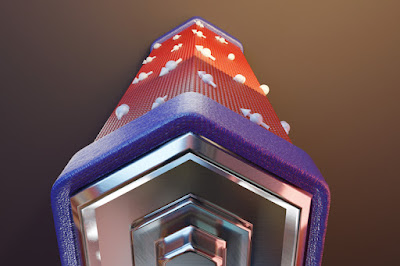 |
| The first quantum phase battery, consisting of an indium arsenide (InAs) nanowire in contact with aluminium superconducting leads. (Courtesy: Andrea Iorio) |
Topics: Battery, Cooper Pairs, Materials Science, Quantum Mechanics, Superconductivity
Researchers in Spain and Italy have constructed the first-ever quantum phase battery – a device that maintains a phase difference between two points in a superconducting circuit. The battery, which consists of an indium arsenide (InAs) nanowire in contact with aluminium (Al) superconducting leads, could be used in quantum computing circuits. It might also find applications in magnetometry and highly sensitive detectors based on superconductors.
In a classical battery (also known as the Volta pile), chemical energy is converted into a voltage difference. The resulting current flow can then be used to power electronic circuits. In quantum circuits and devices based on superconducting materials, however, current may flow without an applied external voltage, thus dispensing with the need for a classical battery.
The concept of a quantum phase battery was studied theoretically in 2015 by Sebastián Bergeret of the Material Physics Center (CFM-CSIC) and Ilya Tokatly at the University of the Basque Country in Donostia-San Sebastián, Spain. Their battery design comprised a combination of superconducting and magnetic materials and was based on a Josephson junction – a non-superconducting region through which the Cooper pairs responsible for superconductivity can tunnel. This semiconducting “weak link” provides a persistent phase difference between the superconductors in the circuit, similar to the way that a classical battery provides a persistent voltage drop in an electronic circuit. Thanks to this phase difference, a superconducting current (that is, a current with zero dissipation) flows when the junction is embedded in the superconducting circuit.
Physicists create quantum phase battery, Isabelle Dumé, Physics World

